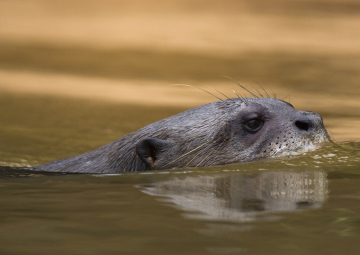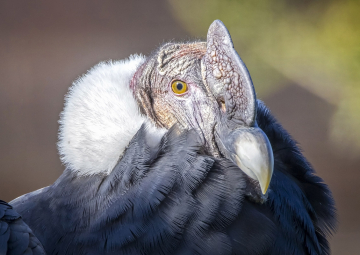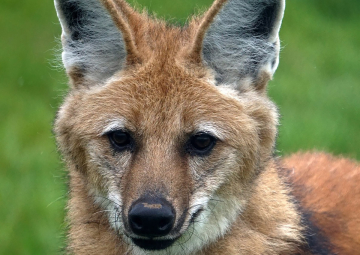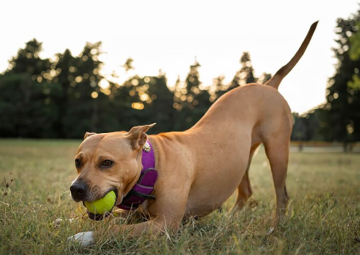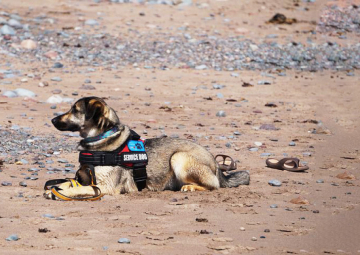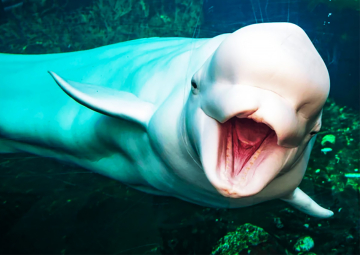Land mammals
Training with aging pandas

My name is Matt Leung and I am a New Yorker animal keeper working with giant pandas in Hong Kong. I have been working with them for over 10 years now, and prior to that I have also worked with marine mammals in the US, where I learned a lot about animal training.
In the wild, pandas can live into their 20s, while under human care their life expectancy can be a little longer, into 30s. Although the living conditions and medical care on our part are better than in their natural habitat, they also develop clinical problems typical of elderly animals.
To ensure their well-being, we must have a training program to perform all the medical check-ups they need on a voluntary basis, because although pandas may seem very friendly and eat fruit and bamboo, we cannot forget that they are bears!

High blood pressure can be one of the health conditions associated with old age in giant pandas. Currently, my main role is to monitor the health of a geriatric giant panda, and my experience in handling these amazing animals has been the reason why taking blood pressure readings has become one of my daily routines, because hypertension can be one of the health problems associated with old age in giant pandas.
As with other medical training, we use positive reinforcement (with fruit cubes) and secondary reinforcement (such as scratching or patting), although sometimes it is difficult because we work with them with protected contact.

Step by step
First, we focus on training the pandas to present their front paw out through the bars of their enclosure.
Once the behavior is stable, we place and adjust a handle at the right position (where the pandas can grab tightly but sit comfortably) and we start to reinforce every time they touch the handle. That is how we work safely.
This technique is known as DRI (differential reinforcement of incompatible behavior), because grabbing the handle is incompatible with grabbing the arm of the zookeeper or veterinarian.
In the following step, we pair it with a cue and extend the time while they are grabbing the handle.
Finally, we start to touch the arm while they are grabbing the handle, and move on by using a prop needle to desensitize the feeling of being poked.
The research of the blood pressure reading are very interesting. When they are going through different seasons and are exposed to changes in temperature and food source, their behavior changes. For example, when appetite decreases or activity decreases, so does blood pressure.

Another thing I've learned working with pandas is that we can't expect training to go smoothly all the time. Sometimes they just want to be petted or get into mischief. We usually try not to insist too much in the training sessions, to avoid confusing them, as elderly pandas can sometimes be very grumpy and stubborn, and even if they know the behavior you are asking them to do they sometimes just refuse to do it.
We have to keep in mind that their motivation and appetite are affected by the different seasons of the year, resulting in training being much slower than with other pandas. But the most important thing is that at the end of the day, we make sure that their training routines, food and medication (if needed) are covered.
Since we don't want them to refuse or get confused, we take it to be correct that they have a sense of knowing what they should be doing at that specific time. Therefore, when we have to take their blood pressure, the time has to be about the same every day. After all, they are elderly and can be spoiled a bit.

We have not yet carried out a detailed research on how the blood pressure reading is affected by seasons, as mentioned each subject is quite different. Indeed it would be a nice thing to predict how the trend will go, and we can ask for a change of prescriptions from the veterinarian whenever we feel there is a need.
So it's sure to be an interesting project to pursue in the future!
Many thanks to my friends of WeZooit and to all the readers for letting me share my experience with pandas.












